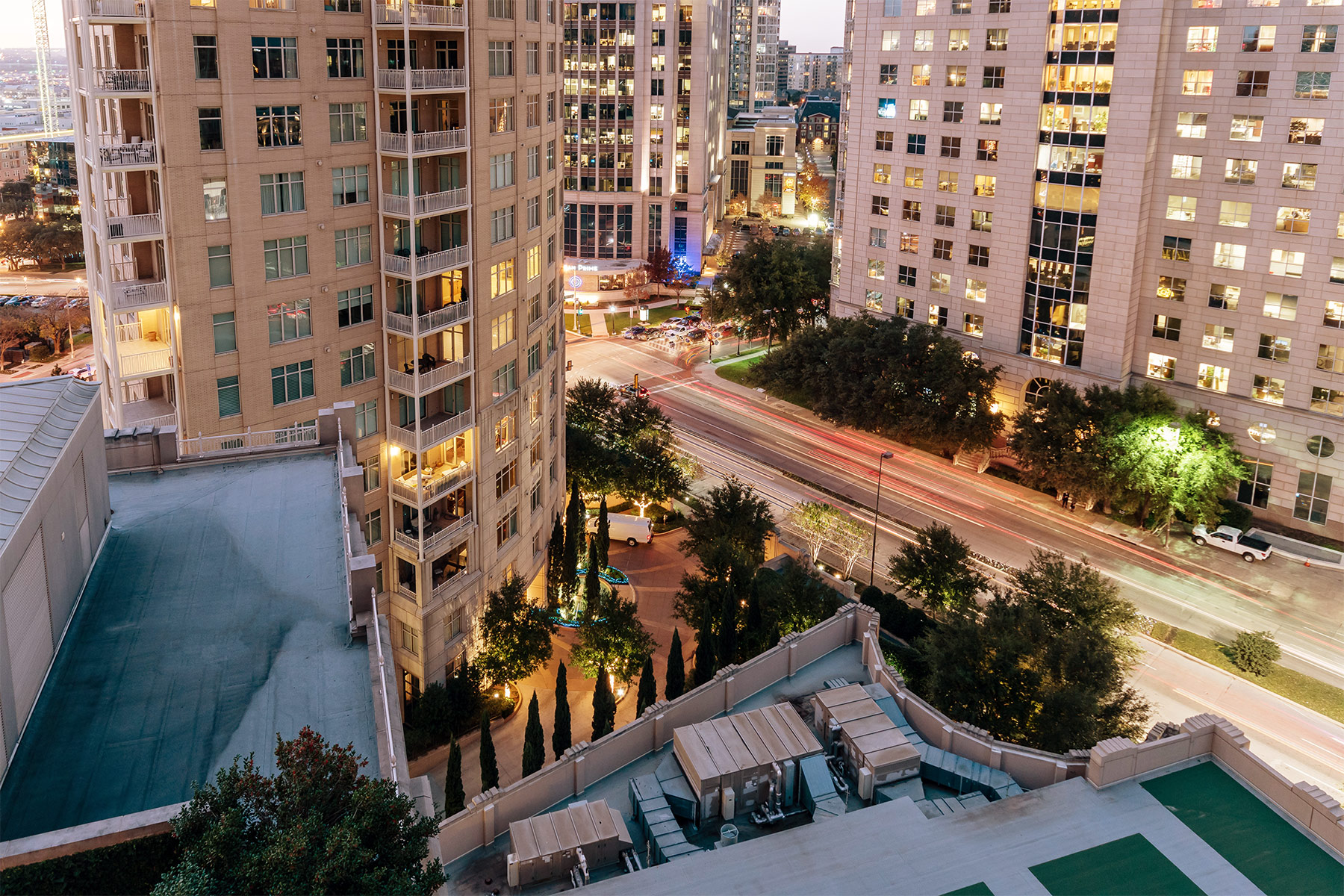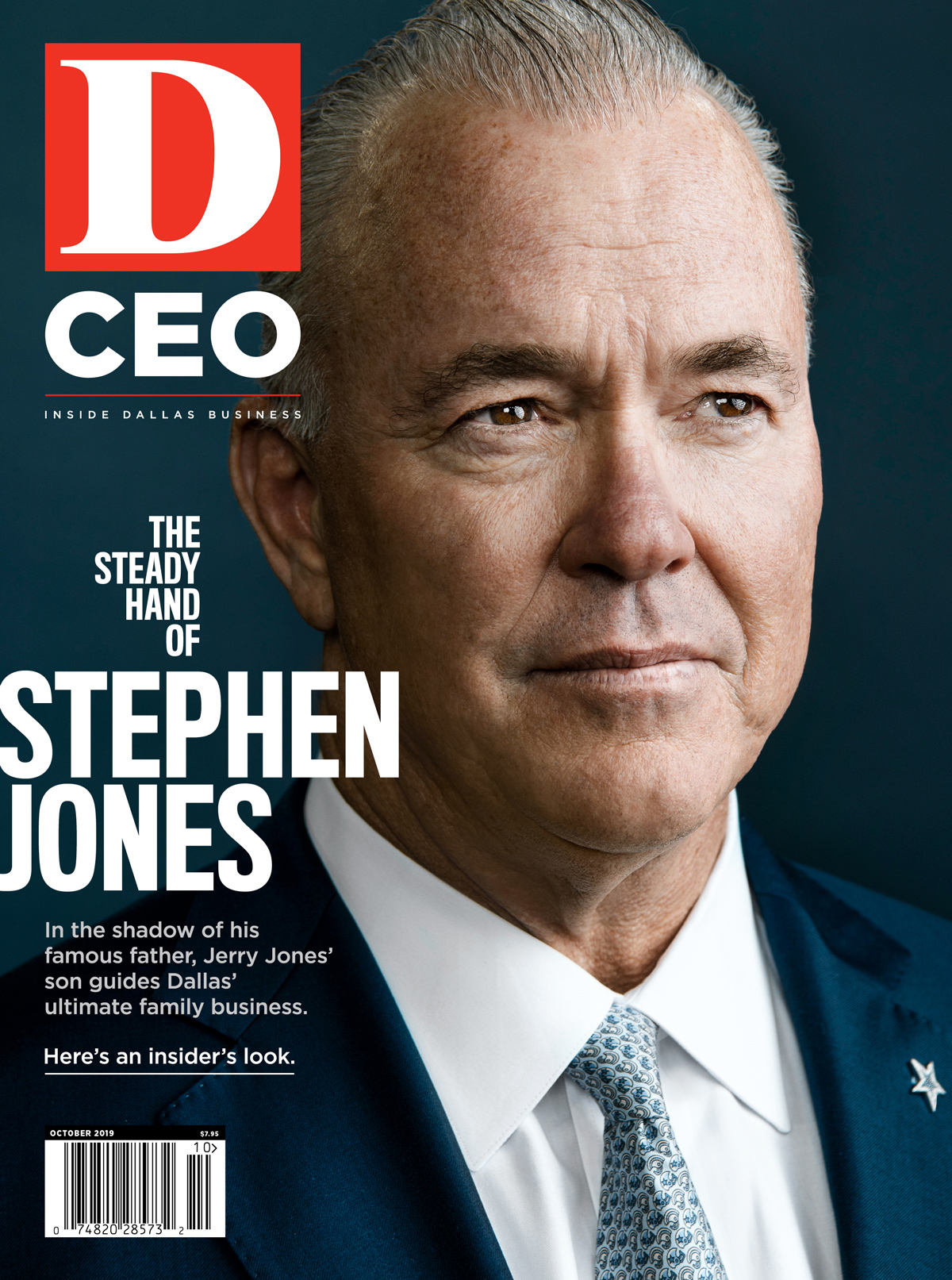For the past two decades or so, residential development in walkable neighborhoods has been almost exclusively limited to apartments. But the demand—and opportunity for value creation—is there in the for-sale market, too. Interest in walkable urban in Dallas-Fort Worth has accelerated in recent years, driven by demographic shifts and the brisk relocation activity the region has seen, as people moving from pedestrian-friendly urban markets seek to replicate these lifestyles in North Texas.
What they find is a disappointing lack of supply. For-sale housing makes up about 62 percent of DFW’s real estate square footage. But just one-half of 1 percent is located within walkable urban places, or WalkUps. That’s according to data from urbanism expert Chris Leinberger and his team at the Center for Real Estate and Urban Analysis at The George Washington University, which recently did an in-depth study of the North Texas market.
Cities should make zoning accommodations to support more for-sale product type in WalkUps, Leinberger says. Not just because the demand is there, but because of the marked difference in valuation. Across the metro, the average price of for-sale residential is $122 per square foot. For properties located within WalkUps, it’s two times that: $249 per square foot. The difference is especially stark in luxury markets like Victory Park, Uptown, Preston Center, downtown Dallas, and Fort Worth’s downtown and Cultural District, where the average median price is $308 per square foot—a 151 percent premium when compared to the regional average. Residences located in WalkUp-adjacent areas (within a half-mile), attract a premium of 1.7, or $209 per square foot.
Leinberger recently joined Dallas residential real estate executive Robbie Briggs, CEO of Briggs Freeman Sotheby’s International Realty, to discuss walkability and profitability at an event held at The Adolphus and hosted by D Magazine Partners. Here are highlights from their conversation:
Walkability Challenges in DFW
Robbie Briggs: “With the exception of Atlanta, a lot of the markets where WalkUps are doing well are north of the Mason-Dixon line. I love to walk in Washington or Chicago, where it’s not 104 degrees. One thing we can’t do a lot about in Dallas is the heat. … Walkability only works if where you live, work, and play are all reasonably close together. So, maybe you go for two of the three, and find a place where it’s easy to drive to work and spend the rest of your day there. That’s where I see the city growing; new places are popping up that are accessible and fun. If you can create housing around these areas, it’s going to be more valuable and improve everyone’s lifestyle—no question. But, it has to be easy.”
Chris Leinberger: “Dallas has been the champion of building drivable sub-urban for the last 50 to 60 years, and this is a structural shift that the market is demanding—whether we like it or not, it doesn’t matter. The market wants it, and it’s going to get it. Cities and developers have to find a way to deliver it. … The places that will convert first are neighborhoods that were first developed when most people didn’t have cars; they were streetcar subdivisions and built as walkable neighborhoods. They have character and they’re already laid out in a way that supports walkability.”
Briggs: “I find it interesting that your research had Preston Center among the most walkable neighborhoods in the region. I avoid Preston Center because parking challenges there make it difficult to access. We’re relocating our office, and Preston Center was one of the places we considered. But our Realtors are always out and about showing properties, and Preston Center wasn’t feasible because of that. So, we’re moving to Turtle Creek. It’s not 100 percent walkable, but our new space has bike storage and we’re a block from the Katy Trail. There are restaurants in the area and it’s not hard to get to. So, some places may be very walkable, but it might take 45 minutes to get out of the parking garage when you’re ready to get home.”
Corporate Relocation Activity
Briggs: “We’re no longer in a heated market, we’re in a more normalized market. But it only takes one or two big relocation announcements and everyone starts thinking, ‘It’s time to buy.’ That will come again. We will have more big announcements at some point. … Relocations bring all different types of buyers who want different types of things. One executive with Toyota made it absolutely clear to us that she wanted to be in a walkable area; she wanted to be downtown. She didn’t care that the company would be up in Plano. She is fine riding DART out that way, and that’s what she does. She did not bring a car. On the other hand, the CEO wanted to be in a golf community near the airport. He bought in Westlake. So, relocations bring all different types of buyers, and that diversity affects all of our markets.”
Leinberger: “DFW has been the winner of the corporate relocation market for decades, and it came close with Amazon’s HQ2. If you look at the requirements that Amazon put out: The area had to be transit-served, vital, walkable urban, within very close distance to a major airport. That’s the economic development future of our country. … We did a study about three or four years ago with Cushman & Wakefield. We looked at 500 corporate relocations over the last four or five years, and they all went to walkable urban locations. The No. 1 thing driving their decisions was attracting millennial employees. The No. 2 reason was branding. It’s so 20th century to be in a business park. If you want to brand yourself as a knowledge economy company, you have to be in a walkable urban location.”
Challenges Ahead
Briggs: “We’re not building enough for the demand, especially for housing that’s affordable for a normal corporate worker. This type of housing is getting further and further out, and that’s going against what we’re talking about this morning. It’s making people even more dependent on the automobile. You can’t find a house under $300,000 in Frisco or McKinney; you have to go to Anna or someplace further out. That, to me, is one of the major problems our city is facing and that is another reason why relocations become more difficult. Companies have to find housing and an affordable lifestyle for their employees, or they won’t come.”
Leinberger: “Dallas-Fort Worth is still stuck in the late 20th century model. But from a land acquisition point of view, from a financing point of view, from a construction point of view, from a marketing point of view, and particularly from a management point of view, everything is different. It’s a night-and-day difference, and developers in Dallas are just starting to catch on. Up in Washington, D.C., and Boston, if you’re not there, you’re out of business.”
Types of Walkups in North Texas
Research by urbanism expert Chris Leinberger and his team has revealed nine possible types of WalkUps (walkable urban places) across the country. Dallas-Fort Worth is home to eight of the nine; the missing type—Innovation Districts—is on the horizon.
- Downtown (Downtown Dallas, Downtown Fort Worth)
- Downtown-Adjacent (Uptown, Victory Park, Deep Ellum; Cultural District, West 7th/Left Bank, Near Southside)
- Urban Commercial (Knox/Henderson, Bishop Arts District/Davis, Lakewood Center, Oak Lawn, Lower Greenville, Design District, Baylor Medical Center; Camp Bowie-the Bricks, Magnolia/Fairmount, East Jefferson, Camp Bowie-Ridglea, Stockyards, and North Main Street
- Urban University and Potential Innovation Districts (SMU/Mockingbird, TCU/West Berry, Downtown Denton, UNT, Texas Woman’s University)
- Major Suburban Town Center (Downtown McKinney, Downtown Carrollton, Downtown Waxahachie)
- Small Town Centers (Grapevine Main Street, Downtown Burleson, Downtown Plano, Downtown Weatherford, Downtown Corsicana)
- Redeveloped Drivable Sub-Urban (Preston Center, Shops at Park Lane)
- Greenfield/Brownfield Development (Southlake Town Center, Addison Circle, Legacy Town Center)






